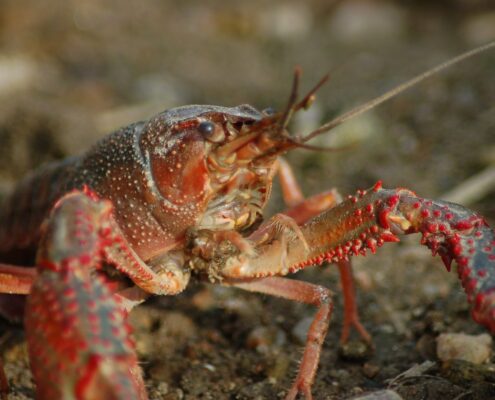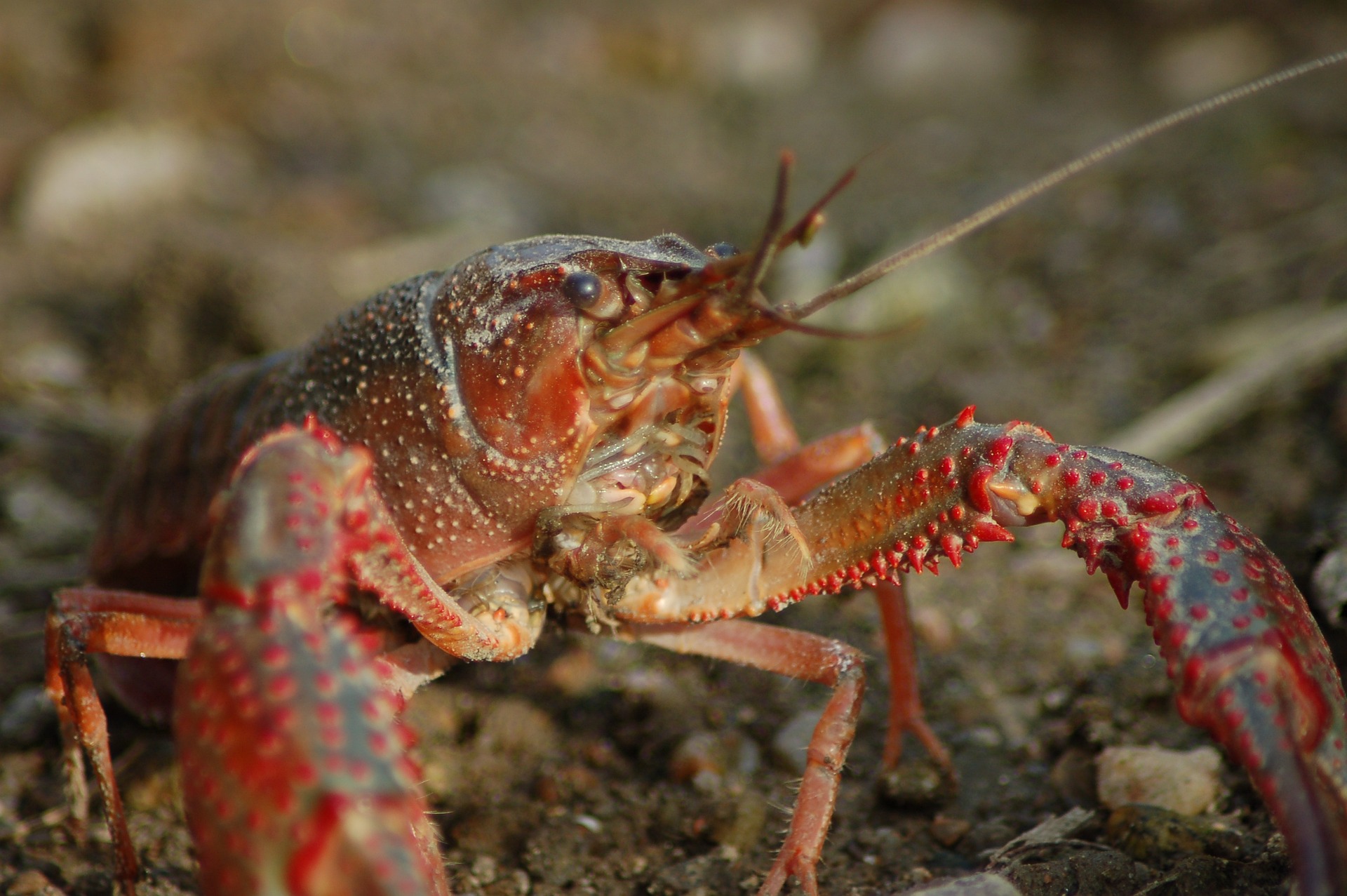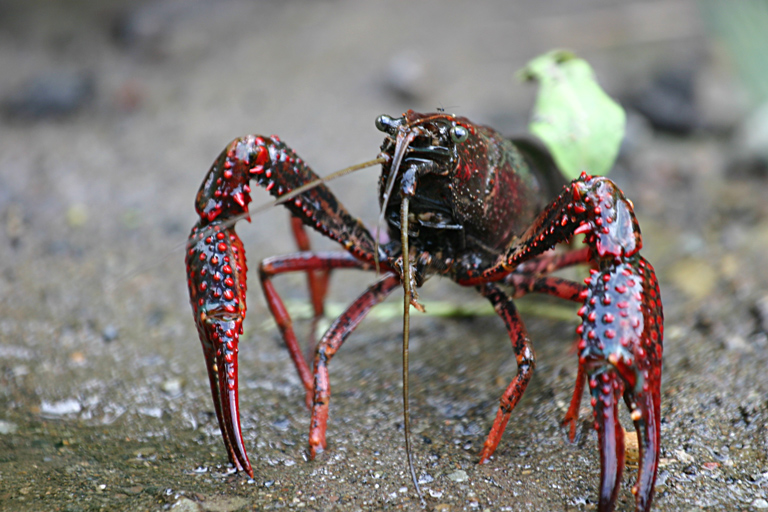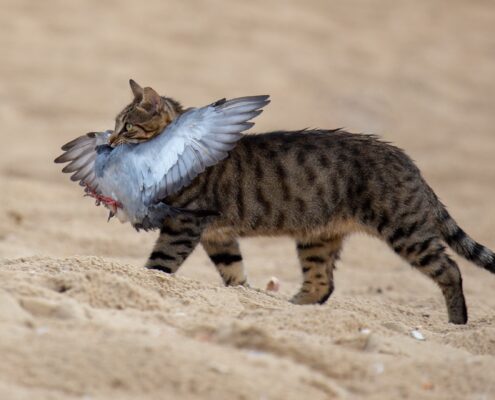 https://greenmarked.it/wp-content/uploads/2023/12/gambero_rosso.jpg
1277
1920
Michele Claus
https://greenmarked.it/wp-content/uploads/2022/01/LOGO-GREENMARKED-SITO-600x600.png
Michele Claus2023-12-05 19:42:002023-12-06 12:02:18The Alien Crayfish
https://greenmarked.it/wp-content/uploads/2023/12/gambero_rosso.jpg
1277
1920
Michele Claus
https://greenmarked.it/wp-content/uploads/2022/01/LOGO-GREENMARKED-SITO-600x600.png
Michele Claus2023-12-05 19:42:002023-12-06 12:02:18The Alien CrayfishDecember 5, 2023

In a recent article, we reported how common and apparently harmless animal species such as the cat are actually one of the most invasive species we interact with almost daily [1].
We also reported on the meaning of invasive species, which more generally can be called allochthonous species:
In biology, an allochthonous or alien species is defined as any living species that, due to human action, is found to inhabit and colonize a territory other than its historical range, self-sustaining reproductively in the new range. [2]
What is happening in Italian lakes and streams, however, has precisely to do with an invasive species, the Louisiana red crayfish (Procambarus clarkii). This crayfish, native between the southern United States and northern Mexico, is now widespread worldwide [3]. The alien species P. clarkii is a dangerous invader whose extreme aggressiveness and ecological and biological characteristics are taking over native crayfish populations.
The problem does not stop on the competition between species for the resources available to them, but unfortunately also on the pest and disease front. The red crayfish has had time to adapt and become healthy carriers of the “crayfish plague”, while native species are not prepared to deal with this disease.
Recently, in the municipality of Colle Brianza, there is precisely an outbreak of crayfish plague, which is causing a die-off of the native crayfish (Austropotamobius pallipes). The Lecco section of WWF promptly took action and, albeit with delays caused by slow bureaucracy, installed the first barriers to prevent infected crayfish from moving upstream and infecting even healthy ones upstream. You can follow the status of the work and all updates on the dedicated page [4].

Fig. 1: Procambarus clarkii (2006). Photo by Mike Murphy on Wikimedia Commons.
In Trentino, too, we are dealing with this problematic invasive species: it was previously known to be present in Lagolo Lake and has recently been found by researchers at the Edmund Mach Foundation (FEM) in other lakes as well [5]. But neighboring South Tyrol has also recently reported that the situation is getting out of hand, for example at Lake Caldaro, where the crayfish has invaded the biotope despite barriers [6]. In the latter case, it cannot be ruled out that the displacement of the crayfish was facilitated by humans: if someone sees a crayfish walking along the edge of the lake, remember that moving it elsewhere could speed up the proliferation of this species and create even more damage.
These current events teach how active citizenship can help counter emergencies caused by alien species, without necessarily having to wait for institutions to take the initiative. There is also to remember, however, how it was man who introduced these animals, so it is up to all of us and our society in general to take charge of these issues so that they are managed in the best possible way.
Related articles:
References
Click here to expand the references[1] Cats and Other Invaders: A Threat to Local Biodiversity – GreenMarked. (2023, October 1). https://greenmarked.it/cats-and-other-invaders-a-threat-to-local-biodiversity/
[2] Contributors of Wikipedia. (2023, October 14). Specie alloctona – Wikipedia. https://it.wikipedia.org/wiki/Specie_alloctona
[3] A Review of Global Crayfish Introductions with Particular Emphasis on Two North American Species (Decapoda, Cambaridae) on JSTOR. (n.d.). www.jstor.org. https://www.jstor.org/stable/20104461
[4] Emergenza gambero di fiume. (n.d.). WWF Lecco. https://wwf.lecco.it/news/emergenza-gambero-di-fiume
[5] Dolomiti, I. (2023, July 21). Si cerca il gambero americano ma dal lago spunta una seconda specie invasiva: “Ancora più dannosa per l’ambiente” – il Dolomiti. Il Dolomiti. https://www.ildolomiti.it/ambiente/2023/si-cerca-il-gambero-americano-ma-dal-lago-spunta-una-seconda-specie-invasiva-ancora-piu-dannosa-per-lambiente
[6] Dolomiti, I. (2023b, December 4). Gambero rosso della Louisiana, “popolazione in aumento e in costante espansione verso nord”. L’allarme: “A rischio anche la stabilità idraulica di argini e dighe” – il Dolomiti. Il Dolomiti. https://www.ildolomiti.it/ambiente/2023/gambero-rosso-della-louisiana-popolazione-in-aumento-e-in-costante-espansione-verso-nord-lallarme-a-rischio-anche-la-stabilita-idraulica-di-argini-e-dighe
Cover- and preview image: Procambarus clarkii or Louisiana Crayfish. Free-source photo by BARBARA808 on Pixabay.




